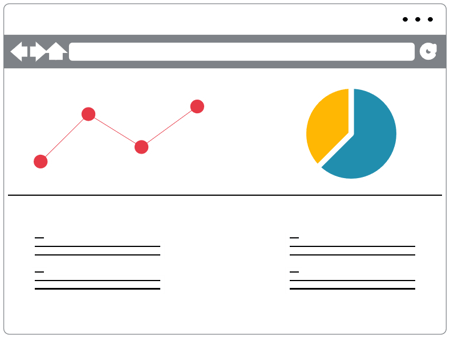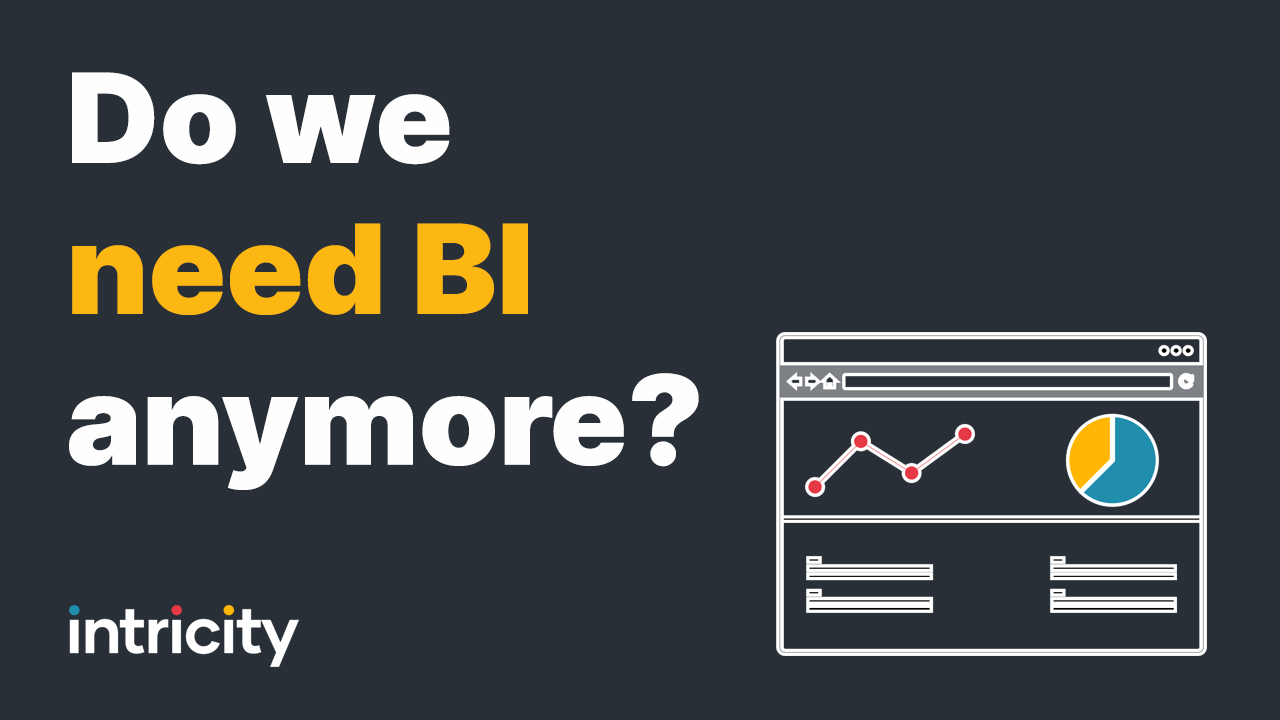
Do we need BI anymore?
Written by Jared Hillam

The year was 2002, the company presenting was Crystal Decisions, and the customer in attendance was Bloomberg. “Crystal Reports is the lifeblood of this organization.” These are the kinds of words that don’t get floated around very often when the vendor and customer are in the same room. But the Crystal Decisions Partner Manager put them out on the table just the same without a fight. Bloomberg wasn’t alone, any large company that had to drive human processes with a regular operational report was in the same boat. And Crystal Reports was the king of operational reporting in those days. Over the last 20 years, this industry of visually turning data into information has seen many companies come and go. And up until January 2023, I would have vouched for the need to have a strong Business Intelligence tool. But I think the end is in sight. Or at least the end what we perceive BI or Analytics to be.
Why?
Why exactly do we need Enterprise Analytics tools in the first place?... well … Humans. We humans need to be informed about how things are running. Because we are the ones that take action on that information. The decisions we make like how many people to hire or how much inventory to buy, need to be based on facts. In order for us to consume that information, we need it presented in a certain way that makes it visually accessible to us. So this is the role Analytics play. This is why most organizations have data analysts and data scientists that assemble analytics for decision-makers to use. But two forces are driving away the category killer of data visualization into a commodity.
Commodity Force 1
The cloud databases that support analytics are under an enormous amount of pressure to demonstrate their abilities to support AI. During the keynotes of Snowflake Summit in 2023, Frank Slootman mentioned that basically every sales call had customers asking them, “What are you doing with AI?”
What BI companies might be missing here is that AI directly threatens their position. There’s no question that Snowflake will have to adapt its platform to work with AI, which it has been aggressively doing. But step back and ask what the outcome will be… well, now as of yesterday, (November 1) you don’t need to really guess… Snowflake is going after analytics. Now, they would never openly say that, but it doesn’t take a super brilliant person to come to that conclusion.
The first clue came more than a year ago, with the acquisition of Streamlit; it provided a way of creating visuals by using Python. Additionally, for all intents and purposes, any kind of chart, graph, or application for that matter, could be generated in Python.
This GUI generator coupled with Snowflake’s upcoming AI capabilities were presented as an analytics workbench of sorts just yesterday. While, in its current form, it probably does not compete head-to-head with out-of-the-box analytics tools there is no denying where this is going.
Commodity Force 2
This is likely a longer-term force but will appear in small, almost imperceptible increments. This is the displacement of humans in making decisions. This has already been happening for many years now, starting with nuanced applications, just like how you don’t have a cash register at McDonald's anymore. In the realm of BI it will appear as a circumvention of the human decision maker, and simply wiring up the decision to an AI. The inputs may be a highly complex set of forecasting queries that are run in the cloud database, but in the end, the decision is made. The execution of the decision after the fact is up to the business. (automated or manual)
Combining Commodity Force 1 with Commodity Force 2 results in basically no outreach to a BI or Analytics tool. The display of data, however basic, in the cloud database notebook, is sufficient to surface the decision and to provide the justifying metrics.
Opposing Force
Every large-scale customer of cloud computing has one screaming problem. Cost!
Managing an organization of thousands of employees who are all engaged in a lot of crazy queries is very expensive. AI just throws a brick at budgets that are already treading water. Part of the problem is that organizations haven’t adopted a “manufacturing” ethos for their data. So very little upfront engineering has been done to get the queries to run faster. This engineering REALLY matters in these budgets, to the tune of millions of dollars yearly.
Exploratory AI treats everything as a fishing expedition, and results in incredible expenses incurred by the organization. However, a well-pruned model can be VERY efficient. So, much of the coming years will be about sharing, surfacing, and incorporating highly pruned AI models that produce with a manufacturing ethos. In the end, the logical distance the data is from the query will be the cost barrier. If the data is engineered to make that logical distance as short as possible, the well-pruned AI models will thrive.
Where does this leave BI?
Fast forward 5 years, 10 years, and even 20 years… What will people be using BI for? They will be using it, of course. But will it have the same prominence as it has had in times past? Doubtful. I believe pure BI platforms will be used less and less as time goes on. The more AI takes ownership of processes, and databases make visualizations a core function of their database notebooks, the less it will be considered a necessity.
White-Collar Jobs?
If I’m being completely honest, this is all a little dystopian. The future will favor the creators, founders, owners, and leaders of these businesses because AI will act as the backbone of what white-collar workers used to do. But the answer is not to cower away into a corner sucking your thumb. The answer is to focus on creation, focus on this new tool, and become an entrepreneur, and now is the time to start.
Who is Intricity?
Intricity is a specialized selection of over 100 Data Management Professionals, with offices located across the USA and Headquarters in New York City. Our team of experts has implemented in a variety of Industries including, Healthcare, Insurance, Manufacturing, Financial Services, Media, Pharmaceutical, Retail, and others. Intricity is uniquely positioned as a partner to the business that deeply understands what makes the data tick. This joint knowledge and acumen has positioned Intricity to beat out its Big 4 competitors time and time again. Intricity’s area of expertise spans the entirety of the information lifecycle. This means when you’re problem involves data; Intricity will be a trusted partner. Intricity's services cover a broad range of data-to-information engineering needs:
What Makes Intricity Different?
While Intricity conducts highly intricate and complex data management projects, Intricity is first a foremost a Business User Centric consulting company. Our internal slogan is to Simplify Complexity. This means that we take complex data management challenges and not only make them understandable to the business but also make them easier to operate. Intricity does this through using tools and techniques that are familiar to business people but adapted for IT content.
Thought Leadership
Intricity authors a highly sought after Data Management Video Series targeted towards Business Stakeholders at https://www.intricity.com/videos. These videos are used in universities across the world. Here is a small set of universities leveraging Intricity’s videos as a teaching tool:

Talk With a Specialist
If you would like to talk with an Intricity Specialist about your particular scenario, don’t hesitate to reach out to us. You can write us an email: specialist@intricity.com
(C) 2023 by Intricity, LLC
This content is the sole property of Intricity LLC. No reproduction can be made without Intricity's explicit consent.
Intricity, LLC. 244 Fifth Avenue Suite 2026 New York, NY 10001
Phone: 212.461.1100 • Fax: 212.461.1110 • Website: www.intricity.com

Sample@gmail.com appears invalid. We can send you a quick validation email to confirm it's yours

